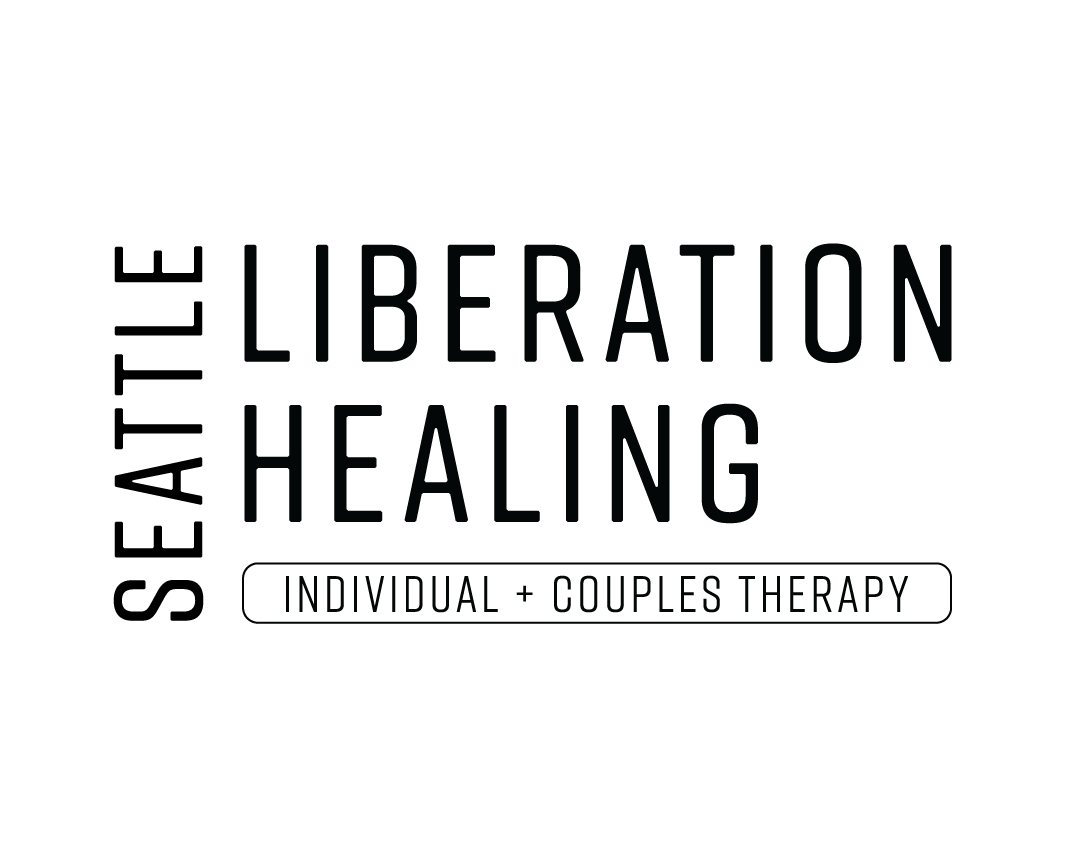Addressing Race and Culture in Therapy
The field of mental health, psychology, social work, and counseling is overwhelmingly dominated by white bodies.
Here are some ways I’ve seen race, culture, and ethnicity show up in the therapy room with both individuals and dayds/couples/relationships:
Trauma
Micro/macroaggressions
Shame spiraling
Blaming, denying, minimizing
Hyper-vigilance
Assuming and using stereotypes to gather client data
Discomfort
Anger
Sadness and pain
Disassociation
Withdrawing and compliance
Race-Based Traumatic Stress (RBTS)
Racial trauma, or RBTS, refers to the mental and emotional injury caused by encounters with racial bias and ethnic discrimination, racism, and hate crimes.
Any individual that has experienced an emotionally painful, sudden, and uncontrollable racist encounter is at risk of suffering from a race-based traumatic stress injury.
In the U.S., BIPOC are most vulnerable due to living under a system of white supremacy.
Questions To Reflect On
How does my preferred theoretical orientation integrate race, culture, and oppression? (Does it?)
How do I practice active work toward anti-racism and anti-oppression?
How do I understand my own racial identity?
What stories did I grow up with in my family, society, religion, and culture about people who are different from me?
What are the parts of my identity I’ve been assigned?
What are the parts of my identity that I’ve chosen?
Practicing awareness and promotion of diversity in all aspects of your life will provide experiential learning for your clinical practice
Tips
Bring up topics of race, ethnicity, and culture first before your clients do
“Before, we begin our consultation, how are you feeling working with someone who is white?”
“As we end our session, I’m wondering what it’s been like for you to work with someone who looks like me.”
Ask a client of color about experiences with racism
Understanding trauma
Understanding signs of acute stress/racial fatigue
Focus on the process as well as the content of what is being (and not said)
Write this on your website and other marketing material in an authentic way
Apologize And Move On (Avoid The Shame Spiral)
Don’t make it about you so the client has to assuage you and make you feel comfortable (so much work for them)
Don’t assume everything is related to race, ethnicity, or culture (sometimes it’s not)
Practice curiousity
Don’t assume
Some trauma may be related to a client’s identities, while some may not at all (let the client move at their pace)
If you do, apologize and move on in session
Practice being uncomfortable
What is my relationship to comfort and discomfort?
How often do I feel comfortable?
What does it mean when I feel uncomfortable in session?
Relate this to racial countertransference
Continue doing your lifelong work of un(learning)
Don’t expect perfection or to be competent (it’s not possible)
Continue going to supervision and consultation and be honest about your limitations
Refer out to someone else more competent if you are unable or unwilling to do your own work
The Tasks of The Privileged & Subjugated
From Gurman, A.S., & Jacobson, N.S. (2002). Clinical handbook of couple therapy, Third Edition. New York, NY: The Guilford Press. Chapter 22: Couple Therapy Using a Multicultural Perspective. Pages 586-588.
TASKS OF THE PRIVILEGED:
To resist false notions of equality. It is not helpful to equate suffering.
Intentions vs. consequences: to understand that intentions may be good, but that doesn’t change the fact that consequences may be bad. It is not helpful to just clarify intentions when consequences were hurtful. Acknowledge the effect, impact, of your actions. Intentions are the province of the privileged; consequences are the province of the subjugated. Including the impact of silence.
To challenge the ahistorical approach. History does matter, the past does affect the present. The privileged cannot understand the subjugated “out of context.”
To develop thick skin. Need to be able to thicken one’s skin, to not give up on connections with people who have been subjugated even if you are initially rebuffed, to continue to go back and back, to continue to try.
5. To not become a FOE “framer of others’ experiences.”
TASKS OF THE SUBJUGATED:
To overcome learned voicelessness; to advocate for oneself. One needs to challenge the belief that it is not worth speaking up. The subjugated have often been taught that “silence is golden” and “don’t speak unless spoken to;” the challenge is to unlearn this behavior.
To learn to exhale the negative messages that have become internalized.
To overcome the addiction to protect, educate or change the privileged.
To deal with one’s own rage, to channel it appropriately, not to eradicate it. Shame is a major stumbling block for the privileged; rage is a major stumbling block for the subjugated.
How we handle difference in the therapy room can make or break the therapeutic relationship. Let’s all try to do it sensitively, with humility, care, compassion, and curiosity.
In a profession where competence and confidence is lauded as the end all be all, sometimes, not knowing and working toward uncertainty and difference is the work.
